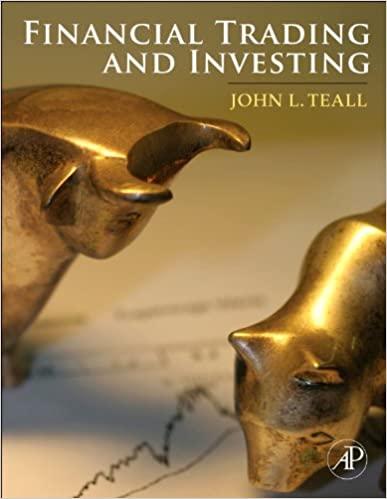2. Suppose that a client of the ABC brokerage firm seeks to have her order of X5500,000...
Question:
2. Suppose that a client of the ABC brokerage firm seeks to have her order of X5500,000 shares executed within three hours with the best possible execution; that is, she wants to realize the lowest possible total execution cost B. ABC works with a market impact model that estimates the cost of each of n equal-sized executions, B/n to have a fixed component F and a variable cost component v(Xi/n)2, where Xi/n is the number of shares traded in any given execution i:
B=n5F1vðX=nÞ2 Broker analysts have estimated F to be $10, based on the order processing costs of each transaction. Market impact costs are estimated with the square root function with v equal to 0.0001.
a. What are the optimal number of equal size transactions and what are the optimal transaction sizes?
b. What are the total market impact or slippage costs associated with the 500,000 share order?
c. Suppose that F in the market impact model is interpreted differently. Rather than representing fixed administrative costs of a transaction, F5rns, where coefficients r50.1 and s50.5 were determined as part of a new OLS regression that still determined numerical values for v50.0001 and m52, the function F is now considered to reflect the total slippage associated with n transactions for stock per hour. Thus, the market impact model is now estimated as follows:
B=n5F1vðX=nÞ2 5rns 1vðX=nÞ2 50:1n:5 10:0001ð500; 000=nÞ2 Based on this new market impact model, what is the optimal number of equal-sized transactions and what are the optimal transaction sizes?
Step by Step Answer:







